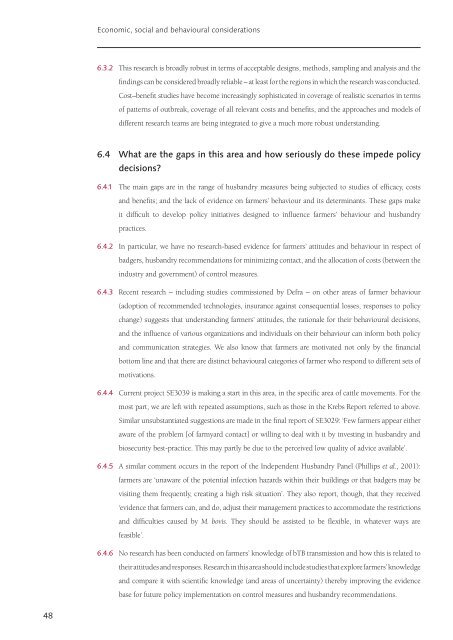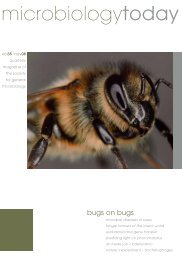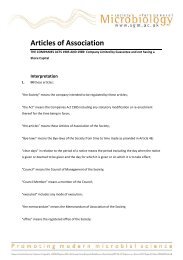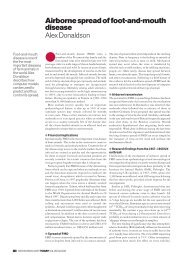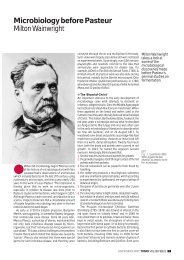final report - ARCHIVE: Defra
final report - ARCHIVE: Defra
final report - ARCHIVE: Defra
You also want an ePaper? Increase the reach of your titles
YUMPU automatically turns print PDFs into web optimized ePapers that Google loves.
Economic, social and behavioural considerations<br />
6.3.2 This research is broadly robust in terms of acceptable designs, methods, sampling and analysis and the<br />
findings can be considered broadly reliable – at least for the regions in which the research was conducted.<br />
Cost–benefit studies have become increasingly sophisticated in coverage of realistic scenarios in terms<br />
of patterns of outbreak, coverage of all relevant costs and benefits, and the approaches and models of<br />
different research teams are being integrated to give a much more robust understanding.<br />
6.4 What are the gaps in this area and how seriously do these impede policy<br />
decisions?<br />
6.4.1 The main gaps are in the range of husbandry measures being subjected to studies of efficacy, costs<br />
and benefits; and the lack of evidence on farmers’ behaviour and its determinants. These gaps make<br />
it difficult to develop policy initiatives designed to influence farmers’ behaviour and husbandry<br />
practices.<br />
6.4.2 In particular, we have no research-based evidence for farmers’ attitudes and behaviour in respect of<br />
badgers, husbandry recommendations for minimizing contact, and the allocation of costs (between the<br />
industry and government) of control measures.<br />
6.4.3 Recent research – including studies commissioned by <strong>Defra</strong> – on other areas of farmer behaviour<br />
(adoption of recommended technologies, insurance against consequential losses, responses to policy<br />
change) suggests that understanding farmers’ attitudes, the rationale for their behavioural decisions,<br />
and the influence of various organizations and individuals on their behaviour can inform both policy<br />
and communication strategies. We also know that farmers are motivated not only by the financial<br />
bottom line and that there are distinct behavioural categories of farmer who respond to different sets of<br />
motivations.<br />
6.4.4 Current project SE3039 is making a start in this area, in the specific area of cattle movements. For the<br />
most part, we are left with repeated assumptions, such as those in the Krebs Report referred to above.<br />
Similar unsubstantiated suggestions are made in the <strong>final</strong> <strong>report</strong> of SE3029: ‘Few farmers appear either<br />
aware of the problem [of farmyard contact] or willing to deal with it by investing in husbandry and<br />
biosecurity best-practice. This may partly be due to the perceived low quality of advice available’.<br />
6.4.5 A similar comment occurs in the <strong>report</strong> of the Independent Husbandry Panel (Phillips et al., 2001):<br />
farmers are ‘unaware of the potential infection hazards within their buildings or that badgers may be<br />
visiting them frequently, creating a high risk situation’. They also <strong>report</strong>, though, that they received<br />
‘evidence that farmers can, and do, adjust their management practices to accommodate the restrictions<br />
and difficulties caused by M. bovis. They should be assisted to be flexible, in whatever ways are<br />
feasible’.<br />
6.4.6 No research has been conducted on farmers’ knowledge of bTB transmission and how this is related to<br />
their attitudes and responses. Research in this area should include studies that explore farmers’ knowledge<br />
and compare it with scientific knowledge (and areas of uncertainty) thereby improving the evidence<br />
base for future policy implementation on control measures and husbandry recommendations.<br />
48


